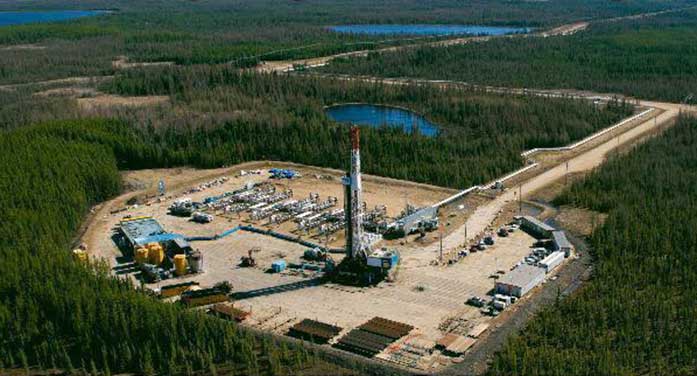 The growing global energy security crisis caused by Russia’s invasion of Ukraine highlights the unique value of Canada’s oil sands to North America.
The growing global energy security crisis caused by Russia’s invasion of Ukraine highlights the unique value of Canada’s oil sands to North America.
Along with the sector’s stable, reliable supply is the joint commitment by virtually all oil sands producers to reduce total emissions and reach net zero by 2050 to help fight climate change.
“If I’m engaging in the use of fossil fuels, and I do every day, as does almost everybody on the planet, I want to be sure that I’m doing that in a way that minimizes the environmental impacts,” says Kevin Birn, head of greenhouse gas emissions co-ordination with financial analyst S&P Global.
Birn says that true energy security must include adequacy, affordability and sustainability.
“Because of hydrocarbons, we enjoy the quality of life that we currently have. It’s everything from the roads we drive on, which doesn’t matter what your engine is, to the plastic bags in hospitals for your IV. And you cannot just simply remove it.
| RELATED CONTENT |
| It’s time to invest in Canada’s energy sector By Tim McMillan |
| Is a new world order on the horizon for the energy sector? By Rashid Husain Syed |
| Fossil fuel non-proliferation treaty would hurt humanity By Deborah Jaremko |
“We’re on a journey, and the destination matters. But for us to get to the destination, we actually have to be able to make the boat move there.”
Canada’s oil sands producers are working to be at the bow of that boat for North America through the Oil Sands Pathways to Net Zero alliance.
Six companies representing 95 per cent of oil sands production have set decade-by-decade targets to reach the equivalent of zero emissions by 2050.
It’s “a ready-made sustainable solution to energy security for all of North America,” according to Cenovus Energy CEO Alex Pourbaix.
The U.S. needs long-term, reliable oil supply
There’s no question that the United States will require a significant amount of oil – and oil imports – for decades to come, even as more renewable energy comes online.
The latest outlook from the U.S. Energy Information Administration projects that U.S. consumption of petroleum products will grow by nearly two million barrels per day between 2021 and 2050. Meanwhile, U.S. crude oil imports will increase by about one million barrels per day.
The vast majority of U.S. oil imports come from Canada. But with government actions like cancelling the Keystone XL pipeline, that could change.
The Biden administration is in talks with nations like Venezuela, Saudi Arabia and Iran, rather than Canada, to increase production to replace banned barrels from Russia.
Oil sands committed to reducing emissions
In Canada, the Pathways alliance has released progressively intensifying targets to reduce emissions to the equivalent of zero, meaning that any emissions from production will be balanced by emissions removed from the atmosphere.
As of 2018, the six oil sands producers had combined emissions of 68 megatonnes. Using that as a baseline, the group aims to reduce emissions by 32 per cent (22 megatonnes per year) by 2030; 54 per cent (25 megatonnes per year) by 2040; and by 100 per cent (21 megatonnes per year) by 2050.
According to IHS Markit, oil sands producers have already achieved success reducing emissions per barrel, or emissions intensity, by 20 per cent since 2009. The consultancy expects total oil sands emissions – not just emissions per barrel – to start going down within the next five years.
Building on successful collaboration
Suncor Energy CEO Mark Little says the Pathways strategy builds on more than $1.8 billion worth of shared work by Canada’s Oil Sands Innovation Alliance (COSIA).
This year marks the 10th anniversary of COSIA, which was launched by competing producers in 2012 to accelerate reductions in environmental impacts like emissions, water use and tailings.
“The whole point of it was we should go faster in improving,” Little told reporters on the sidelines of the recent CERAWeek energy conference in Houston.
“This is actually taking it one step further, to work jointly investing in the infrastructure that’s required so we can go even faster, and even at a lower cost. That’s the plan.”
The power of CCUS
At the heart of the strategy is carbon capture and storage (CCS) technology, where emissions that would have otherwise entered the atmosphere are captured and stored deep underground.
The captured CO2 can also be used to create valuable products like concrete, impurity-free ethyl alcohol for spirits and fragrances, and carbon composites that can replace metals in airplanes and sports equipment. This variation on the technology is called carbon capture, utilization and storage (CCUS).
The International Energy Agency says it will be “virtually impossible” to meet emissions reduction targets without significantly expanded CCS.
Large-scale projects in Canada have safely stored more than 41 million tonnes of CO2 deep underground, or the equivalent of taking more than eight million cars off the road.
Alberta is investing in CCS and the federal government has expressed support for development.
“This technology is still in its early stages but is already employing thousands of Canadians,” federal ministers Jonathan Wilkinson and Steven Guilbeault wrote earlier this month.
“It has the potential to make a big dent in cutting pollution while creating sustainable jobs and economic growth across the country.”
Protecting Canada’s economy, U.S. energy security
The oil sands producers say that an investment of about $75 billion by industry and government in the Pathways vision will protect $3 trillion of economic contribution to Canada over the next 30 years.
It will also protect U.S. energy security by providing a stable, reliable and increasingly low-carbon energy supply.
Deborah Jaremko is director of content for the Canadian Energy Centre, an Alberta government corporation funded in part by taxes paid by industry on carbon emissions. The unaltered reproduction of this content is free of charge with attribution to Canadian Energy Centre Ltd.
For interview requests, click here.
The opinions expressed by our columnists and contributors are theirs alone and do not inherently or expressly reflect the views of our publication.
© Troy Media
Troy Media is an editorial content provider to media outlets and its own hosted community news outlets across Canada.

